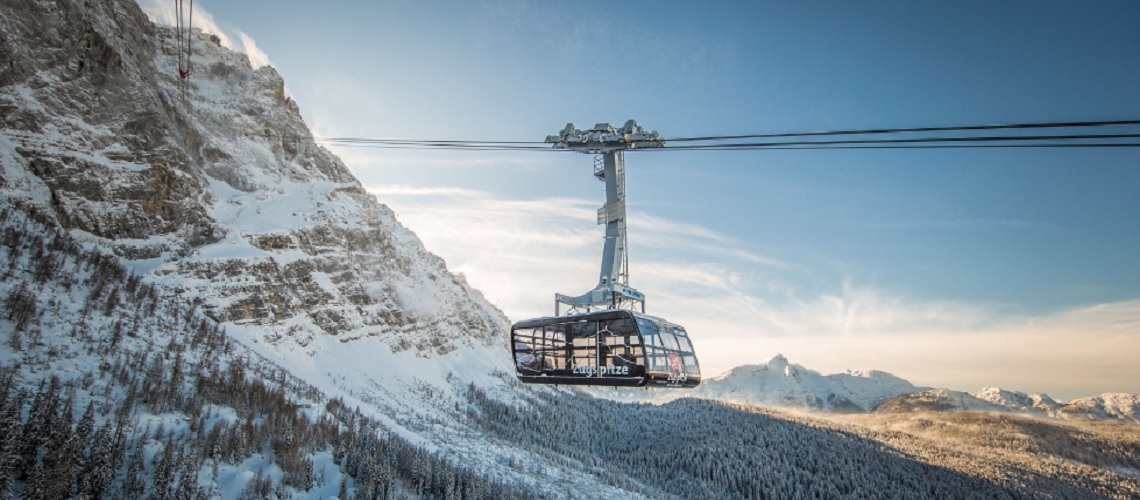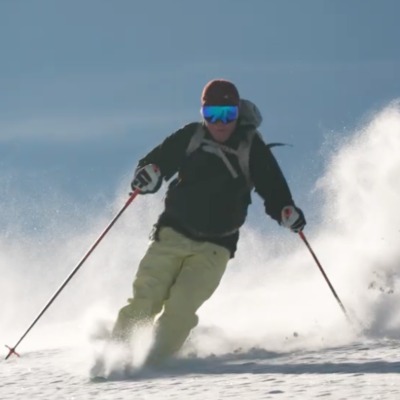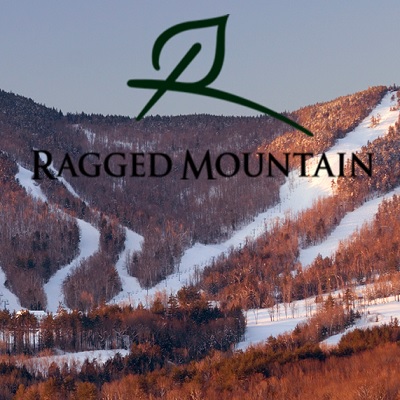Association Of German Cable Car Operators Presents Cable Car Timetable For Winter

The Association of German Cable Cars Operaors has presented cable car timetable for winter.
Energy efficiency in focus for a long time
- The total energy requirement for the operation of systems and technical snowmaking in German winter sports areas was 42.5 GWh in winter 2021/2022. That is 0.0075 percent of Germany's gross electricity consumption
- In winter 2021/22, German ski resorts obtained around 74 percent of their electricity from renewable energies and 5.9 percent from self-generated green electricity
In the current phase of the energy crisis, inflation and uncertainty, the ropeway industry is showing once again how responsibly and effectively it takes the changing framework conditions into account. The cable cars are the backbone for numerous tourist destinations. As an employer, you make a social and economic contribution in many regions. A job at the cable car creates and secures an average of 5.1 jobs in the region.
At the same time, the cable cars assume ecological responsibility for people and nature: In recent years, countless measures have been taken to optimize energy consumption and conserve resources when operating the systems: from waste heat use to self-generated electricity to hydroelectric power and photovoltaics. In winter 2021/22, German ski resorts obtained around 74 percent of their electricity from renewable energies and 5.9 percent from self-generated green electricity.
Snowmaking should not be dispensed with. It is the basis for successful winter tourism. Guests are looking for guaranteed snow, quality and variety of slopes. Thanks to technical developments, the energy consumption for snowmaking has been significantly reduced in recent years. In addition, the majority of the energy comes from renewable energies (photovoltaic, hydroelectric power and green electricity). In addition, due to the lower temperatures, snowmaking mostly takes place at night when electricity is not in short supply.
With all our efforts in the direction of energy saving, energy efficiency: Lift and snowmaking systems need energy. Albeit far less than generally assumed: The total energy requirement for the operation of the systems and the technical snowmaking in German winter sports areas was 42.5 GWh in the winter season 2021/2022. Measured against the German gross electricity consumption of 565,000 GWh, that is the equivalent of just 0.0075 percent. The annual standby losses in German households alone are two hundred times higher: they are around 10,000 GWh.
For years, all member companies have been pooling their strengths and ideas for sustainable action in order to first and foremost achieve ecological and social goals in addition to economic goals. Mobility in particular has become the focus of attention.
“The understanding of the need for sustainable action must be strengthened. This affects companies, but also tourists. For this we need meaningful cooperation in order to search for the best concepts and solutions together. Since the arrival and departure of guests is one of the greatest challenges, it is precisely the development of innovative mobility and visitor management approaches that the mountain railway industry must lead the way in," emphasizes Prof. Dr. Guido Sommer, Head of the Institute for Sustainable and Innovative Tourism Development (INIT) at Kempten University.
The greatest environmental impact during winter holidays is the arrival and departure.
About 45 to 50 million tourists reach the Alps every year. Of these, a good 84 percent travel in their own car. Researchers at the Swiss Federal Institute of Technology in Zurich have calculated that a full 75 percent of the CO2 emissions of a one-week ski holiday can be attributed to the journey to and from the destination.
The closer a winter sports area is to your place of residence, the lower the environmental impact of traveling there. That is why it is so important - not only from an economic and social point of view - to promote and maintain small regional ski areas.
"We understand sustainability as a process that has to be lived and developed continuously and that takes into account all three dimensions - social, ecological and economic -" says VDS board member Matthias Stauch. "I see the industry on the right track here."
- Fancy winter sports: Skiing is a trend – the cable car industry is on the rise
- In the summer of 2022, the member companies recorded an increase of 14.2 percent in net traffic revenue and 8.2 percent in first-time entries
- 46 percent of winter sports enthusiasts have already planned their vacation. In 2019 it was 42 percent.
- The demand is therefore greater than before Corona.
- Half of winter sports enthusiasts want to save on vacation: "Shorter", "closer" and "save on additional expenses" are primary guest strategies.
The past few years, which have been marked by the pandemic, have led to upheavals and cuts in the entire German economic landscape, affecting tourism in general and the cable car industry in particular.
The past few years, which have been marked by the pandemic, have led to upheavals and cuts in the entire German economic landscape, affecting tourism in general and the cable car industry in particular.
The results for the summer of 2022 are all the more pleasing: The member companies recorded an increase in net traffic revenue of 14.2 percent and in first-time entries of 8.2 percent, both compared to the previous year.
The positive trend that the Manova opinion research institute identified in a representative survey for the coming winter is already apparent here: “46 percent of alpine winter sports enthusiasts have already planned their vacation. For comparison: in 2019 it was “only” 42 percent. The demand is therefore greater than before Corona," states Klaus Grabler, Managing Director of Manova.
Matthias Stauch, President of the Association of German Cable Cars, is particularly pleased that, according to the survey, the proportion of very interested non-skiers has risen from three percent in 2019 to seven percent now: "Our hearts beat for alpine winter sports, we are happy about anyone we can get enthusiastic about,” says Stauch.
The uncertainties in the energy crisis were also examined in the current ski potential analysis. Half of winter sports enthusiasts want to save on vacation, "shorter", "closer" and "save on additional expenses" are primary guest strategies.
The study also shows that people are realizing that skiing holidays are more sustainable than long-distance travel.
“On this basis we can face the future with confidence. We cable cars are in the starting blocks for next winter and we and our guests are looking forward to a snowy season,” said President Stauch.
Factsheet
- Cable cars 207
- T-bar lifts 1,240
- Winter 2021/22 2020/21 no operation
- Net traffic revenue €110.0 million (+17% vs. 3-year average)
- Skier-days 5.0 million (- 6.8% vs. 3-year average)
- Summer 2022 provisional
- Net traffic revenue €89.4 million (+14.2% yoy)
- First-time admissions 6.6 million (+8.2% compared to previous year)
- Due to the 1½ year pandemic, large investments and construction projects have been postponed. However, many member companies have invested in comfort, digitization, infrastructure and snowmaking.
- Added value ; 1 job at the cable car secures 5.1 jobs in the region
- Energy Winter 2021 / 2022
- 42.5 GWh total energy requirement (systems and technical snowmaking)
- 0.0075 percent of German gross electricity consumption
- 74 percent of electricity from renewable sources
- 5.9 percent from self-generated green electricity














